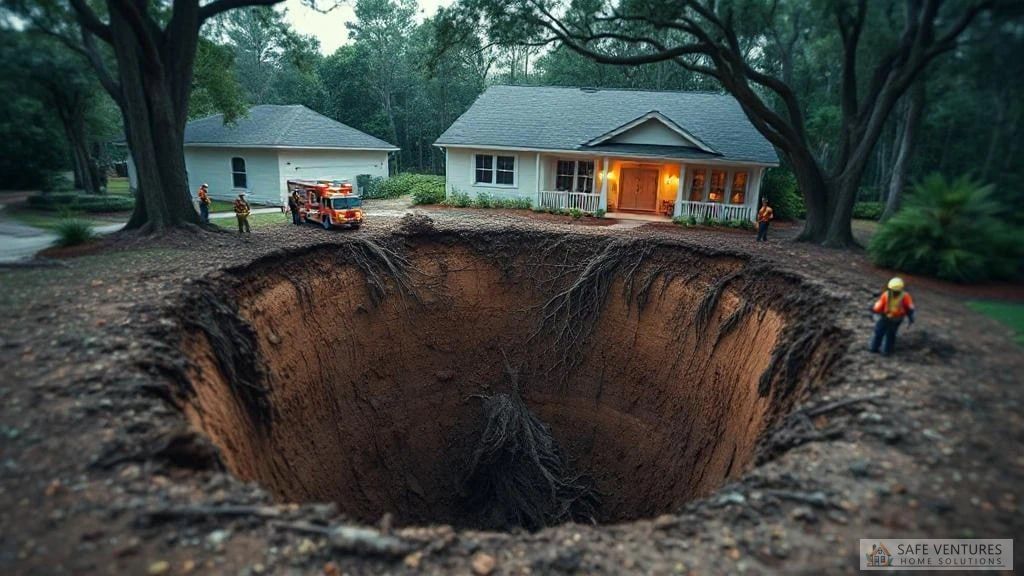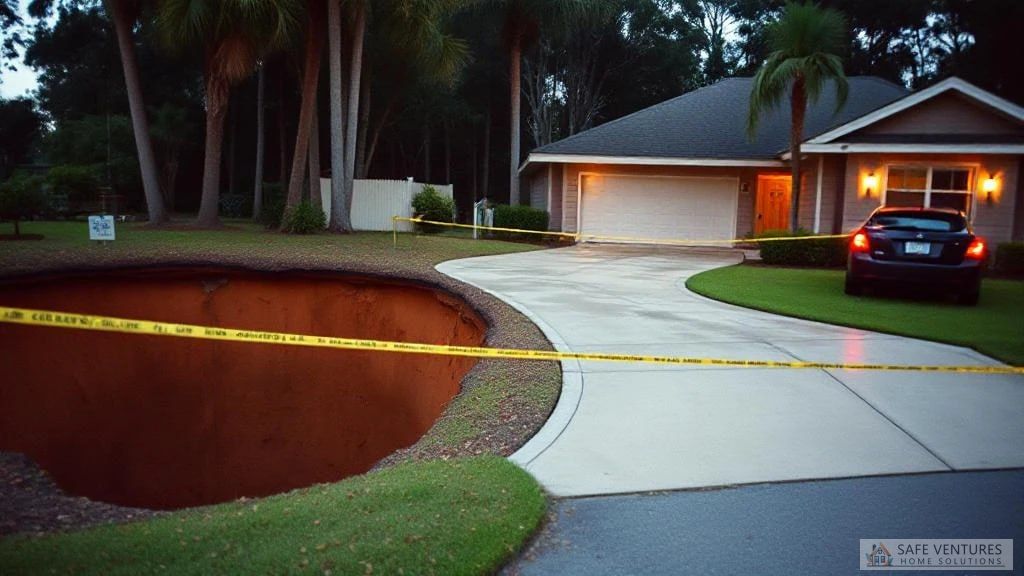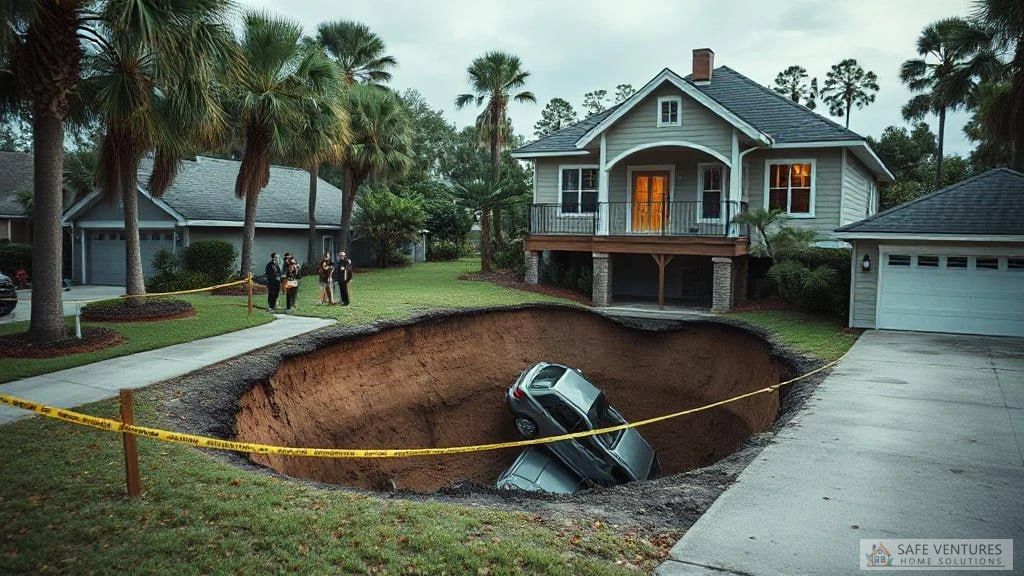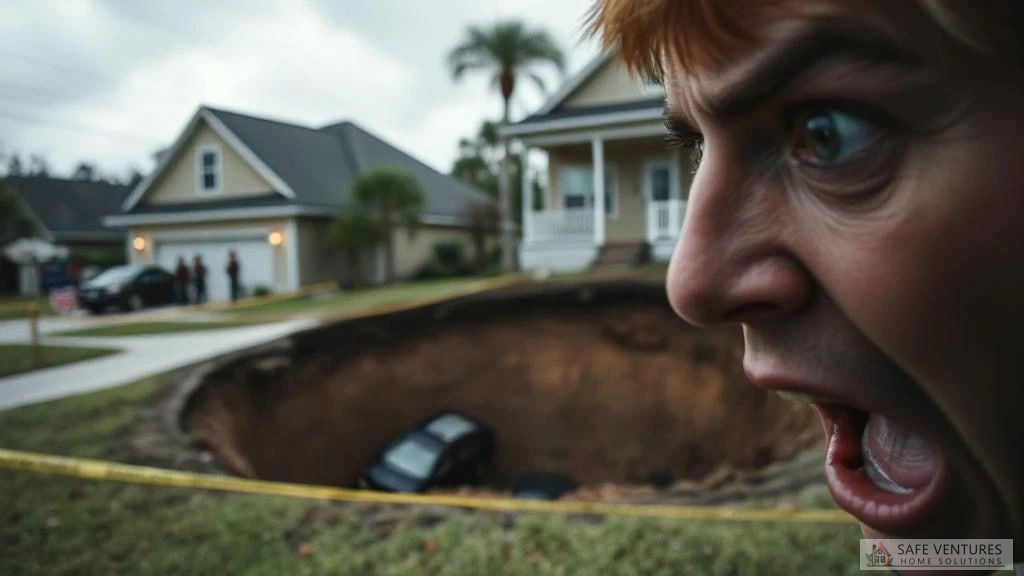Should You Buy a Home with a Sinkhole History in Florida?
Florida is famous for its beaches, warm climate, and world-class attractions, but there’s another side to the Sunshine State that doesn’t make the postcards: sinkholes.

If you’re house hunting in Florida, especially in counties like Hillsborough, Pasco, or Hernando, you may come across a listing with a history of sinkhole activity. That alone can raise eyebrows, and rightly so. But what does it really mean for you as a buyer?
Let’s break it down in real, simple terms, no alarmism, just facts, and a bit of street-smart real estate advice.
What Makes Sinkholes So Common in Florida?
It all comes down to what lies beneath. Florida’s foundation is mostly made up of limestone, a porous rock that slowly dissolves when exposed to slightly acidic groundwater. Over time, this erosion can lead to underground voids, and when the ground above gives way, a sinkhole is born.
These aren’t just rare geological quirks, either. Between 2006 and 2010, over two-thirds of Florida’s sinkhole-related insurance claims came from just three counties: Hillsborough, Pasco, and Hernando. It’s no coincidence, this is ground zero for Florida’s so-called “Sinkhole Alley.”
How to Check for Sinkhole Activity Before Buying
Before putting in an offer on a home, take a few minutes to research its sinkhole history. This isn’t difficult, but it’s a step many buyers overlook, especially out-of-state or first-time homebuyers.
Start with the County Appraiser’s Website
Every county has slightly different tools, but many maintain public databases of properties with known sinkhole or subsidence activity.
Here are links for two high-risk counties:
- Hillsborough County Subsidence Search
https://gis.hcpafl.org/SubsidenceSearch/#/nav/Search
Search properties marked as remediated or unremediated. - Pasco County Sinkhole/Subsidence Parcel List
https://search.pascopa.com/subside.aspx?mprs=2&src=Q&fil=1&sf=2&so=1&recs=100
Properties may be marked with categories like “Sinkhole Activity,” “Structural Damage,” or “Remediated.”
Understand What the Labels Mean
Not all sinkhole activity is created equal. In Pasco, for instance, you may see:
- Sinkhole Activity: Evidence of geological movement underground.
- Structural Damage: Damage to the home caused by the sinkhole.
- Remediated: Steps were taken to stabilize the land, often involving grouting or underpinning.
Each label carries its own implications for financing, insurance, and resale.
So What If the Property Has Sinkhole History?
 It depends on how the situation was handled and what your end goal is.
It depends on how the situation was handled and what your end goal is.
Let’s say the home was stabilized, and there’s documentation proving the remediation was successful. In that case, you might still be able to finance the property, although you may face stricter terms or need a specialty insurer.
However, if the sinkhole is unremedied, financing through a traditional mortgage becomes nearly impossible. Most lenders will reject the deal outright, leaving cash as your only option.
A Red Flag for Lenders And Future Buyers
Even if you’re paying cash, think long-term. When you go to sell, the next buyer might not be so keen to purchase a home with a geological black mark, even if everything appears solid today.
Why Some Investors and Homeowners Still Roll the Dice
So, why would anyone willingly buy a home with a sinkhole history? One word: price.
Homes with documented sinkhole issues can be listed for up to 50% below market value. For investors who don’t need financing and are willing to take a calculated risk, it could mean serious profit, assuming the structure is sound and the damage is cosmetic or already resolved.
Even so, remember: sinkhole history stays on the record unless steps are taken to officially remove it.
What Can You Do About It?
 If you already own, or are considering buying, a property with this kind of history, you’ve got a few paths forward.
If you already own, or are considering buying, a property with this kind of history, you’ve got a few paths forward.
1. Sell the Property As-Is
This is the simplest route. You’ll likely attract mostly cash buyers, but expect lower offers.
2. Remediate the Problem
Sinkhole remediation isn’t cheap. Depending on the severity, repairs can run into tens of thousands of dollars. Still, it may open doors to future financing or better resale value.
3. Attempt to Remove the Sinkhole Designation
If the house shows no visible structural damage, you may be able to commission a licensed geologist to perform a new inspection. With a favorable report, you can petition the county to remove or revise the sinkhole designation. While not guaranteed, some homeowners have succeeded with this approach.
Final Thoughts
 Buying a home in Florida should be exciting, not stressful. A sinkhole history doesn’t automatically make a property a no-go, but it does mean you need to be extra diligent.
Buying a home in Florida should be exciting, not stressful. A sinkhole history doesn’t automatically make a property a no-go, but it does mean you need to be extra diligent.
If you’re paying cash, you may find a hidden gem. But if you need financing or plan to sell within a few years, sinkhole history can be a real roadblock. Always check county records, understand the implications, and talk to a knowledgeable real estate professional before making your move.
References and Sources
- Florida Department of Environmental Protection
Offers in-depth insight into the geology behind Florida’s sinkholes.
https://floridadep.gov/fgs/sinkholes - Hillsborough County Property Appraiser’s Office
Provides a searchable tool for checking known subsidence on properties.
https://gis.hcpafl.org/SubsidenceSearch/#/nav/Search - Pasco County Clerk of Court
Tracks publicly accessible sinkhole reports and remediation updates.
https://search.pascopa.com/subside.aspx - Insurance Information Institute
Discusses how sinkholes impact homeowners’ insurance and real estate.
https://www.iii.org/article/sinkholes-and-insurance-coverage
The information on this page is for general informational purposes only and does not constitute professional advice. SafeVHS is not responsible for any decisions made based on this content. Please consult a qualified professional for guidance specific to your situation.
